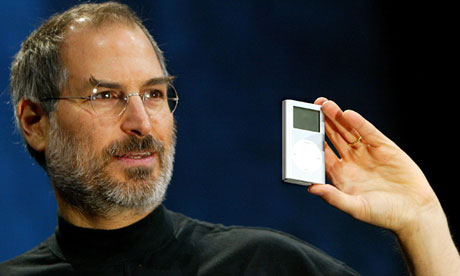What are artists missing in their online promotion? Here we look at a new app that allows bands to reward fans for their support in way that has, as of yet, not been easily achievable through channels like Facebook and iTunes.
In 2003 Steve Jobs changed the music business by launching iTunes with 200,000 songs available for download. For labels and bands, he gave them a digital distribution channel costing half that of selling CDs through retail stores. For music fans, he freed the song from its captivity in the album, letting fans stretch their music dollars to just the songs worth owning. Anyone still paying $250 a month to Comcast for cable TV has to applaud that.
But there’s another really important piece of the music business that Steve Jobs never got to. The Album Release Cycle, controlled by record labels who sign bands to multi-album contracts to provide an ongoing supply of fresh product, accounts for 40% of each album sales dollar, a total of $3 billion per year. The biggest piece of that goes to promotion spending, timed to the release of a new album and spent on payola for radio station airplay, mass media advertising, and spiffs for better retail shelf placement.
But the promotion story is even bigger than that. This spending drives not just music sales, it’s also relied on by booking agents and tour promoters to drive ticket sales. This means that any band looking to go on tour needs a record label deal to attract a booking agent. The total US sales for all three – music, tickets and merch – is $13 billion. He who controls promotion has a really big stick.
But why does traditional promotion need fixing? Because it’s so inefficient. To reach a national audience means casting a wide net, wide enough to cover the whole country in hopes of capturing the one percent of potential buyers at just the right moment. Only the very top bands can hope to sell enough albums to cover this kind of expense… which leaves the remaining 10,000 bands doing music full time without an effective way to promote.
In Rides The Digital Hero!
Record labels and bands all thought their digital savior would be Facebook. Besides connecting the world’s entire youth, Mark Zuckerberg seemed to be the only one who understood what digitally connected people were capable of…exponential growth!
And he’s right, exponential growth is frustrating for those trying to teach it and for those trying to understand it. Anyone over the age of 35 was taught that growth is measured in percentages. But try that with Mark’s chart above. To capture his growth curve using a percentage scale, your 8 1/2 inch-wide piece of paper would have to be… 27 feet tall!
So every band and record label – 500,000 of them – created a band page on Facebook in hopes of capturing the power of direct-to-fan promotion. But if Facebook was going to be the digital replacement for traditional promotion it would have happened by now. And it hasn’t. What went wrong? What’s missing?
Facebook lacks one of the two types of connections that are necessary to unlock the full power of digitally connected networks of fans. Facebook is superb at enabling fans to share with other fans, but it doesn’t allow bands to share themselves directly with fans in ways that feel direct and personal. In fact Facebook’s architecture precludes it. Let me illustrate.
Imagine you’re Rachel, you are crazy about a band and you post about them constantly to your friends. Imagine further you have tickets to their live show, and on the day of the show up pops this message:
“Hey Rachel, thanks for coming to our show tonight! Be sure to stop by our merch table for a special gift.”
What is Rachel’s next act? Something like this…
“OMFG, you will not believe what just happened!!!! Look at what the band just sent me!!”
It gets better. Rachel can’t wait to get to the show and she finds the merch table. The gift waiting for her is a personalized iPhone case with the band’s logo and her name… Rachel.
Quoting the psycho killer in The Red Dragon… “Do you see? Do you see?” This is what I mean by a special band experience, one that feels direct and personal.
Now let’s pull back the curtain. It happened with just a few simple steps…the band created a list of fans by selecting certain criteria – those attending the show AND averaging 5 social shares about the band per week – and then drafted a text message and scheduled it for delivery on the day of the show. The system personalized each message before sending them on show-day. Meanwhile a 3-D printing company called GROM produced custom iPhone cases for each fan using the same list, and delivered them to the venue prior to the show.
Now try doing this using Facebook. Full stop at step one… bands have no idea which fans are going to their show or which ones are their super fans raving about them to their networks. And even if they did, they couldn’t send a batch of personalized text messages to each one.
Band & Me does know this about each fan, and very soon Band & Me will let bands do exactly that.


